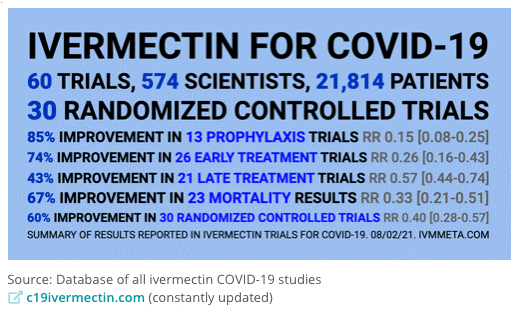
Christine King BVSc, MANZCVS (equine), MVetClinStud
Ivermectin and the Hendra virus
lessons from COVID-19
The coronavirus (COVID-19) pandemic has resulted in some surprising discoveries. One is that ivermectin (yes, that ivermectin, the anthelminthic drug) is a broad-spectrum antiviral agent, inhibiting a wide variety of viruses.
Ivermectin is antiviral
It turns out that ivermectin inhibits a wide variety of viruses, including Hendra virus (HeV). Here is a list of some of the viruses known to be inhibited by ivermectin, at least in the laboratory:
- Adenoviruses (among the causes of the common cold)
- Coronaviruses (CoV), notably SARS-CoV-2
- Dengue viruses
- Equine herpesvirus type 1 (EHV-1, isolated from an aborted foetus)
- Hendra virus (HeV)
- Human immunodeficiency virus (HIV, which causes AIDS)
- Influenza viruses (in particular, avian influenza A, or 'bird flu')
- Pseudorabies virus
- Venezuelan equine encephalitis (VEE) virus
- West Nile virus (WNV)
- Yellow fever virus
- Zika virus
This list covers several different viral groups, making ivermectin a broad-spectrum antiviral agent.
A recent laboratory study showed that ivermectin also inhibits the viruses that contribute to the bovine respiratory disease (BRD) complex in cattle:
- Bovine coronavirus (BoCV)
- Bovine parainfluenza virus type 3 (BPIV-3)
- Bovine viral diarrhoea virus (BVDV)
- Bovine respiratory syncytial virus (BRSV)
- Bovine herpesvirus type 1 (BoHV-1)
The way ivermectin inhibits viral activity within a cell is complex — because viral replication is a complex process. In essence, ivermectin blocks the virus from entering the cell's nucleus and disabling a key component of the cell's antiviral response. In other words, ivermectin blocks one of the critical steps involved in virus replication.
A note of caution before we go on: the molecule blocked by ivermectin — called importin alpha, or IMP𝛂 — is a nuclear transporter protein that aids the transport ('import') of molecules from the cytoplasm of the cell into the nucleus. However, IMP𝛂 is involved in a variety of normal cell functions, including antiviral responses. So, although many different viruses 'hijack' this transporter protein for their own purposes, it is not a good idea to persistenty or permanently block IMP𝛂 in order to block virus replication. To do so would block normal cell functions as well — including the ability to mount an antiviral response.
- Model of IMPɑ′s role in nuclear transport of host and viral proteins, and mechanism of inhibition by ivermectin. A. Normal function. B. Viral hijacking. C. Inhibition by ivermectin.
- Abbreviations: IBB, IMP𝛃-binding region of IMP𝛂; IMP𝛂, importin alpha; IMP𝛃1, importin beta-1; NE, nuclear envelope; NF𝜿B, nuclear factor kappa B; NPC, nuclear pore complex, NS5, a specific viral protein.
- Note: Not all viruses use or rely exclusively on IMP𝛂, so ivermectin is not effective against all viruses, just against those that rely on IMP𝛂 for their replication, such as those listed above.
As of January 2021, there were almost 70 clinical trials underway worldwide on the safety and effectiveness of ivermectin for the treatment or prevention of COVID-19 in humans. (Most have been completed, but some are still ongoing.)
Higher dosages (up to 0.6 mg/kg, or 600 µg/kg, bodyweight) are used in humans for certain parasitic diseases, and these higher dosages have been used in some of the COVID trials and in at least one current treatment protocol (see below).
Perhaps the most comprehensive review to date was published by the Front Line COVID-19 Critical Care Alliance (FLCCC), a group of critical-care physicians. The current (11 Aug 2021) FLCCC guidelines, which target the delta variant, recommend the following:
Prevention (prophylaxis) in high-risk individuals
* if the risk is ongoing, take ivermectin, 0.2 mg/kg per dose, twice a week for as long as disease risk is elevated in your community
This preventive protocol also includes supplemental vitamin D3, vitamin C, quercetin, melatonin, zinc, and a gargled antiseptic mouthwash. It does not rely on ivermectin alone.
* ivermectin (0.4–0.6 mg/kg) per dose — one dose per day as soon as possible after the onset of cold- or flu-like symptoms
* continue daily for 5 days or until recovered
This early treatment protocol also includes supplemental vitamin D3, vitamin C, quercetin, melatonin, zinc, and aspirin, along with oral/nasal 'sanitation' treatments. It does not rely on ivermectin alone.
Treatment for hospitalised patients
* ivermectin (0.4–0.6 mg/kg) per dose — one dose daily for 5 days or until recovery
The FLCCC considers ivermectin to be a core medication for the treatment of COVID-19 in hospitalised patients and they advise giving it on admission to hospital. Even so, it is used in combination with numerous other medications and supplements.
screen shot from FLCCC home page, 03 August 2021.
What does this mean for viral infections in horses?
This research raises a lot of questions for me. An obvious one is whether ivermectin might be useful in the treatment of serious viral infections in horses for which we don't currently have very good or cost-effective treatments, such as the neurologic form of equine herpesvirus type 1 (EHV-1), Murray Valley encephalitis virus, Kunjin virus (Australian strain of West Nile virus), and, of course, HeV. It is possible that horses with Ross River virus infection might also benefit, although I have not found definitive evidence that ivermectin blocks this particular virus.
As I discuss in the multi-part article on HeV in horses, HeV infection is not universally fatal in horses; some infected horses recover — and others don't even become ill when infected with HeV. Furthermore, experimental studies have shown that HeV is not highly contagious.
- In the first experiment of a 3-part disease transmission study using flying-foxes, horses, and cats, 8 flying-foxes were inoculated with HeV and housed in contact with 3 uninfected flying-foxes and 2 uninfected horses.
- None of the flying-foxes or horses became ill, although 6 of 8 inoculated bats developed antibodies against HeV, and 2 of 6 had vascular (blood vessel) lesions on postmortem examination which contained viral antigen. The in-contact bats and horses did not develop HeV antibodies, indicating that they had not been infected with HeV.
- In the second experiment, 4 horses were inoculated with HeV by subcutaneous injection and intranasal inoculation, and housed in contact with 3 uninfected horses and 6 uninfected cats.
- Three inoculated horses became ill, but the fourth horse did not, despite being inoculated with HeV. The in-contact horses and cats did not become infected.
- In a third experiment, 12 cats were inoculated with HeV and housed in contact with 3 uninfected horses. One horse became ill, but the other 2 horses did not.
- In this study, transmission from flying-foxes to horses could not be proven and neither could transmission from horses to horses or horses to cats. "Under the experimental conditions of the study, HeV is not highly contagious."
- A similarly low rate of person-to-person transmission is reported for the closely related Nipah virus (NiV) in people, who can be directly infected with NiV from contact with bat excretions. In one study, only 35 of the 2,494 people who came in contact with a NiV patient (1.4%) probably acquired NiV through person-to-person transmission. Spouses of NiV patients were infected more often (14%) than other close family members (1.3%) or unrelated contacts (0.9%).
- As to that, a monoclonal antibody-based HeV treatment for humans cleared the first hurdle — safety in healthy human volunteers — in early 2020. The next step is to complete a clinical trial that documents its effectiveness for the treatment and prevention of HeV infection in humans exposed to HeV. "The antibody has been available in Queensland since 2010 for the treatment of HeV infection in people. Since then, it has been used on compassionate grounds in 13 people in Queensland."
- * The dosing interval above is my current suggestion, but it is likely to change as we learn more. In the meantime, here are the facts that have guided my thinking: The incubation period for HeV in horses under conditions of natural infection is reported to be 5 to 16 days.
- Although ivermectin may be detectable in the horse's bloodstream for up to 3 weeks after a single oral dose of a paste formulation, its mean residence time in the bloodstream is about 3 days. Its elimination half-life (the time it takes for 50% of the dose to be eliminated) is more like 4–5 days. And there is a great deal of individual variation in time to peak concentration (anywhere from 2 to 36 hours) and in the peak concentration itself (4- to 5-fold difference amongst horses).
- Ivermectin has a good safety profile in horses. It is considered safe up to about 10 times the standard dosage. However, ivermectin toxicity has been documented in foals and adult horses; it manifests as neurologic disorder (unsteadiness, depression, blindness, etc.). Repeated administration at rates above the standard dosage is more likely to cause neurologic signs, particularly with formulations designed to have some residual effect (e.g., oral pastes).
More on ivermectin and COVID-19
1. Since 2012, multiple in vitro studies have demonstrated that ivermectin inhibits the replication of many viruses, including influenza, Zika, Dengue, and others.
2. Ivermectin inhibits SARS-CoV-2 replication and binding to host tissue via several observed and proposed mechanisms.
3. Ivermectin has potent anti-inflammatory properties with in vitro data demonstrating profound inhibition of both cytokine production and transcription of nuclear factor-κB (NF-κB), the most potent mediator of inflammation.
4. Ivermectin significantly diminishes viral load and protects against organ damage in multiple animal models when infected with SARS-CoV-2 or similar coronaviruses.
5. Ivermectin prevents transmission and development of COVID-19 disease in those exposed to infected patients.
6. Ivermectin hastens recovery and prevents deterioration in patients with mild to moderate disease treated early after symptoms.
7. Ivermectin hastens recovery and avoidance of ICU admission and death in hospitalized patients.
8. Ivermectin reduces mortality in critically ill patients with COVID-19.
9. Ivermectin leads to striking reductions in case-fatality rates in regions with widespread use.
10. The safety, availability, and cost of ivermectin is nearly unparalleled, given its near nil drug interactions, along with only mild and rare side effects observed in almost 40 years of use and billions of doses administered.
11. T�h�e� �W�o�r�l�d� �H�e�a�l�t�h� �O�r�g�a�n�i�z�a�t�i�o�n� �h�a�s� �l�o�n�g� �i�n�c�l�u�d�e�d� �i�v�e�r�m�e�c�t�i�n� �o�n� �i�t�s� �“L�i�s�t� �o�f� �E�s�s�e�n�t�i�a�l� �M�e�d�i�c�i�n�e�s�”.�
[Source, including references]
Related articles:
Precautions against ivermectin horse paste to prevent or treat COVID-19 in people
© Christine M. King, 2021. All rights reserved.
First published 04 July 2021. Last updated 06 September 2021.

